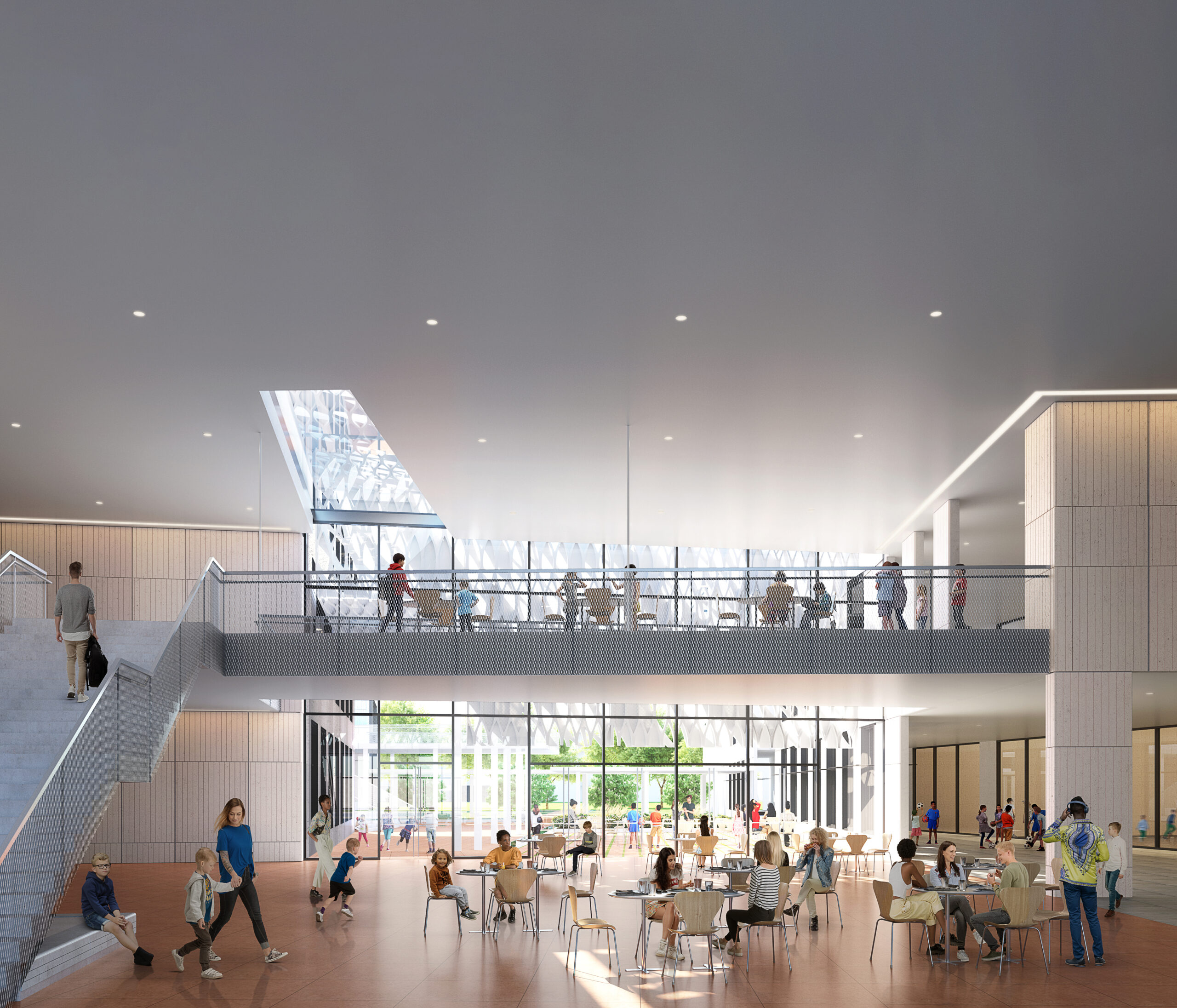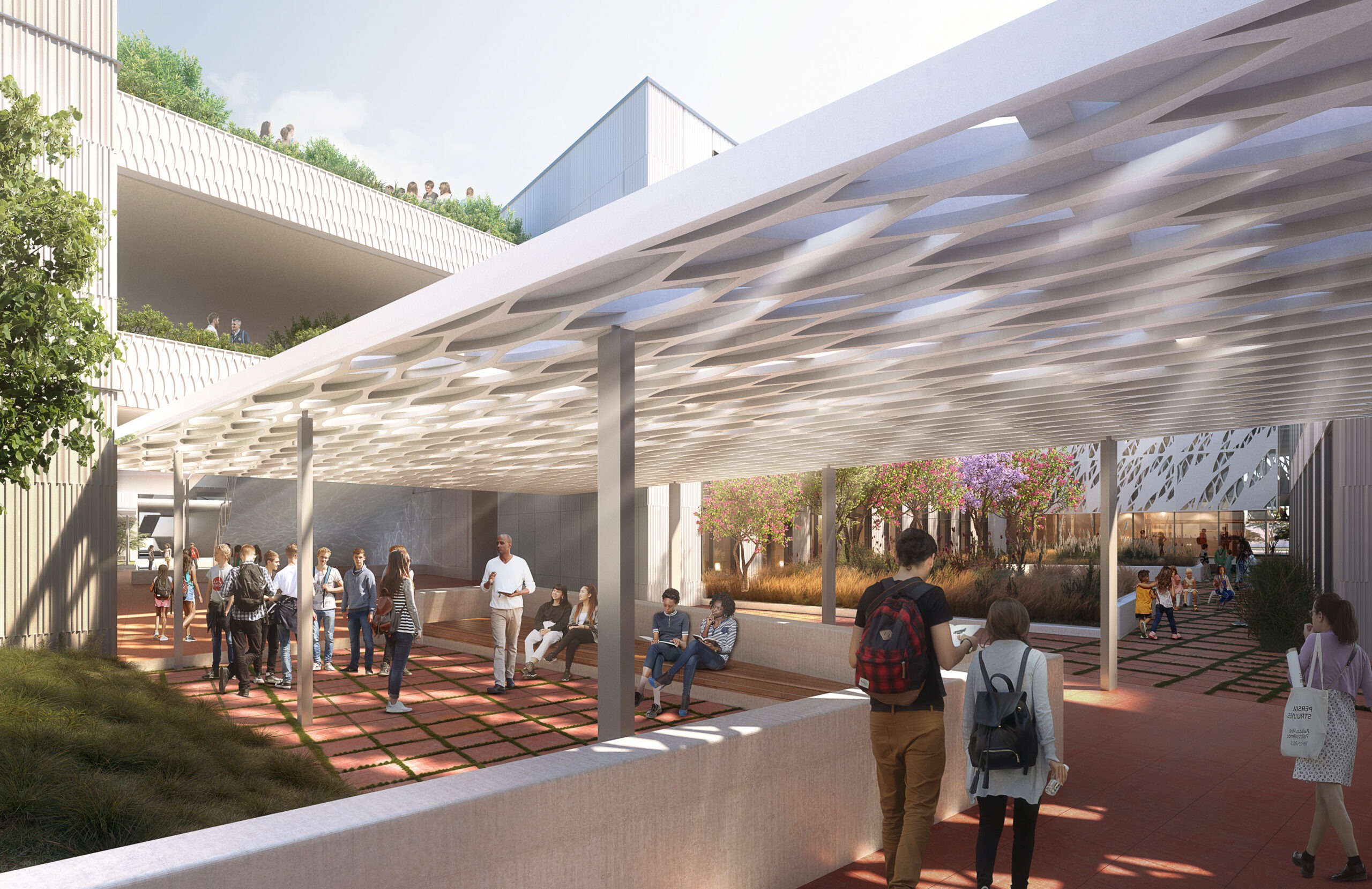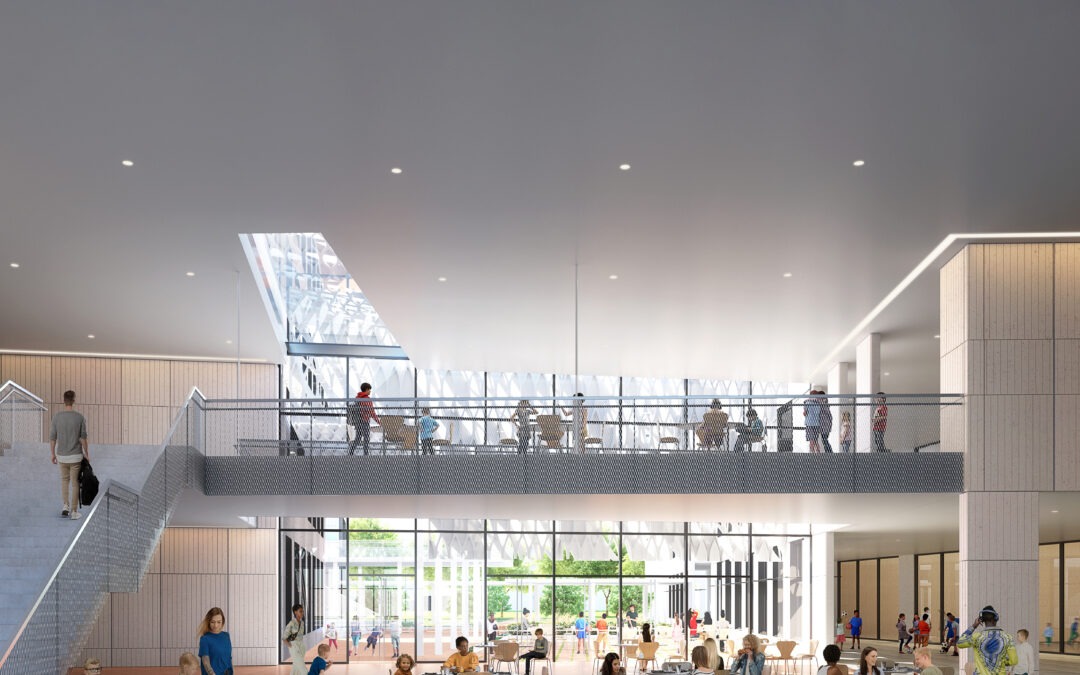Designing Future Learning Spaces
By Austin Sakong, Senior Associate, FXCollaborative Architects LLP

Few things occupy me as much as the question of how we occupy learning spaces. In part, it’s because I’m an architect who designs schools for a living; my days are spent imagining, drawing, building, renovating, furnishing, or master planning spaces for education. Whether for cabinet details or campus plans, for elementary schools or universities, every sketch I make is an attempt to somehow explore the relationship between a student’s physical environment and their ability to learn — as well as what they learn, and how they learn it.
Often, such explorations are straightforward: does a classroom have the right proportions, adequate infrastructure, enough flexibility? The measures by which we answer these questions tend to be specific to the institution and educators we are designing for, and can differ from project to project.
But other times, stepping back from the pressing needs of specific projects, the questions that linger can also feel bigger: why do classrooms need to be rooms at all, and does a school always need to be a building? Why do we atomize education into standardized subjects, math apart from art apart from literature, and assign classrooms accordingly? Why do we cluster students by age? Why do schools … look like schools?
Current School Design
I often think of what the historian James Ackerman wrote back in 1969 for the Harvard Educational Review: “In the Middle Ages, colleges like those at Oxford looked like monasteries because the Establishment was theocratic; today, our high schools look like factories and regiment students like the labor force because the Establishment is commercial and industrial.” Say what you will about our world today, but it is not the commercial and industrial world of 1969.
Today, we are in the throes of at least the third—maybe fourth—industrial revolution; our economy is post-Fordist and late capitalist; we are beset with global crises of climate and health and deep-seated inequities; the ubiquity of technology has radically changed our most intimate and routine social interactions. Our world is no longer divided neatly into discrete monofunctional boxes — yet our schools feel largely stuck in 1969: efficient double-loaded corridors, regimented bells and cells.
Sure, we’ve managed to squeeze a maker space in here and there, installed a few smart boards, and made our furniture a little more mobile. But for the most part, our schools remain factories for the standardized production of students. I worry that it’s just not enough; that the learning environments we all (designers, educators, parents, all of us) continue to demand and produce fall short of what our students need to tackle the tumult awaiting them.
Future School Design
As societal structures and institutions change, schools should too. But in our pursuit of what’s evolving, it’s also important not to lose sight of what’s essential. Our cities are replete with past experiments in school design: schools as churches, schools as fortresses, open plan schools, schools with no windows, plein-air schools, schools with no doors…the list goes on.
Through it all, we can still point to certain pedagogical and spatial components of an education that we know aren’t going away anytime soon: a great teacher, a safe space, joy, abundant natural light, engagement at the individual scale. I think of Socrates teaching in the shade of a tree, and think of all that’s changed, and — especially when speaking with progressive educators about outdoor learning and movement — I think of what hasn’t changed at all.
It’s a tricky endeavor, to ask what will stay constant and what will change. But it feels urgent to try. And the conversation should not be neatly divided into pedagogical, spatial, or social issues; rather, it should probably be messy, fertile, entangled. It should reach across currents, across multiple projects and institutions and perspectives. It should involve architects, educators, school administrators, facility managers, visionaries, business leaders, parents, students, and anyone else invested in the future of learning spaces.
Who knows where such a conversation would lead? It might just lead us out of the past.

Learn more about FXCollaborative here.
This article was originally published in the January 2022 edition of ISS Newslinks.

